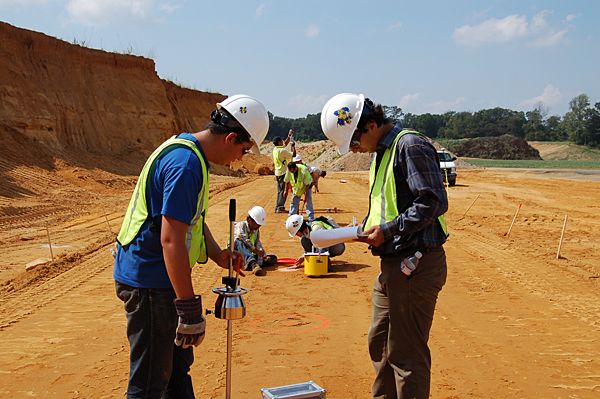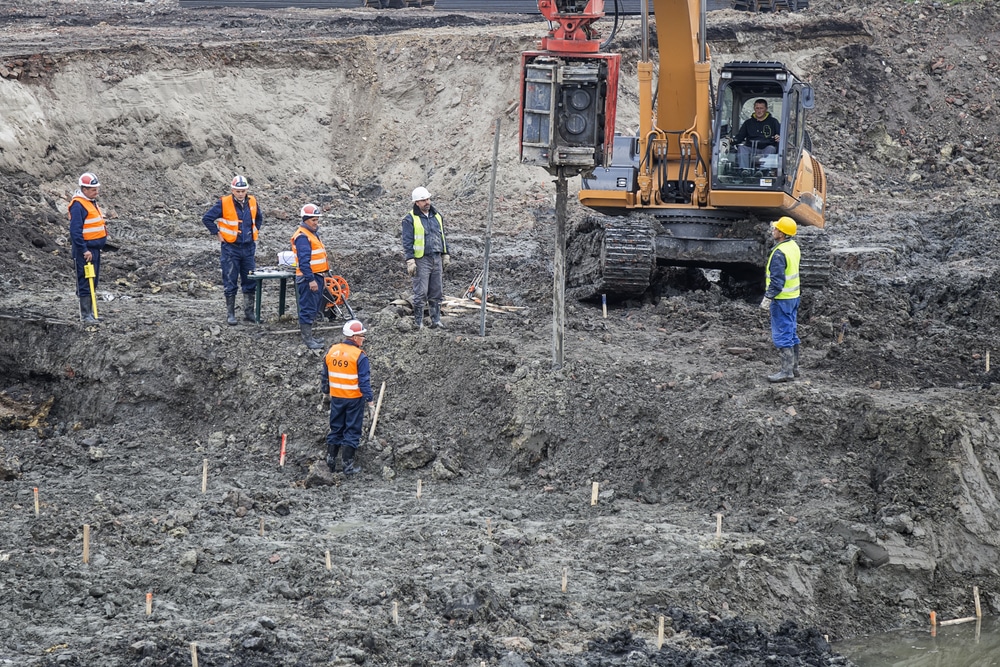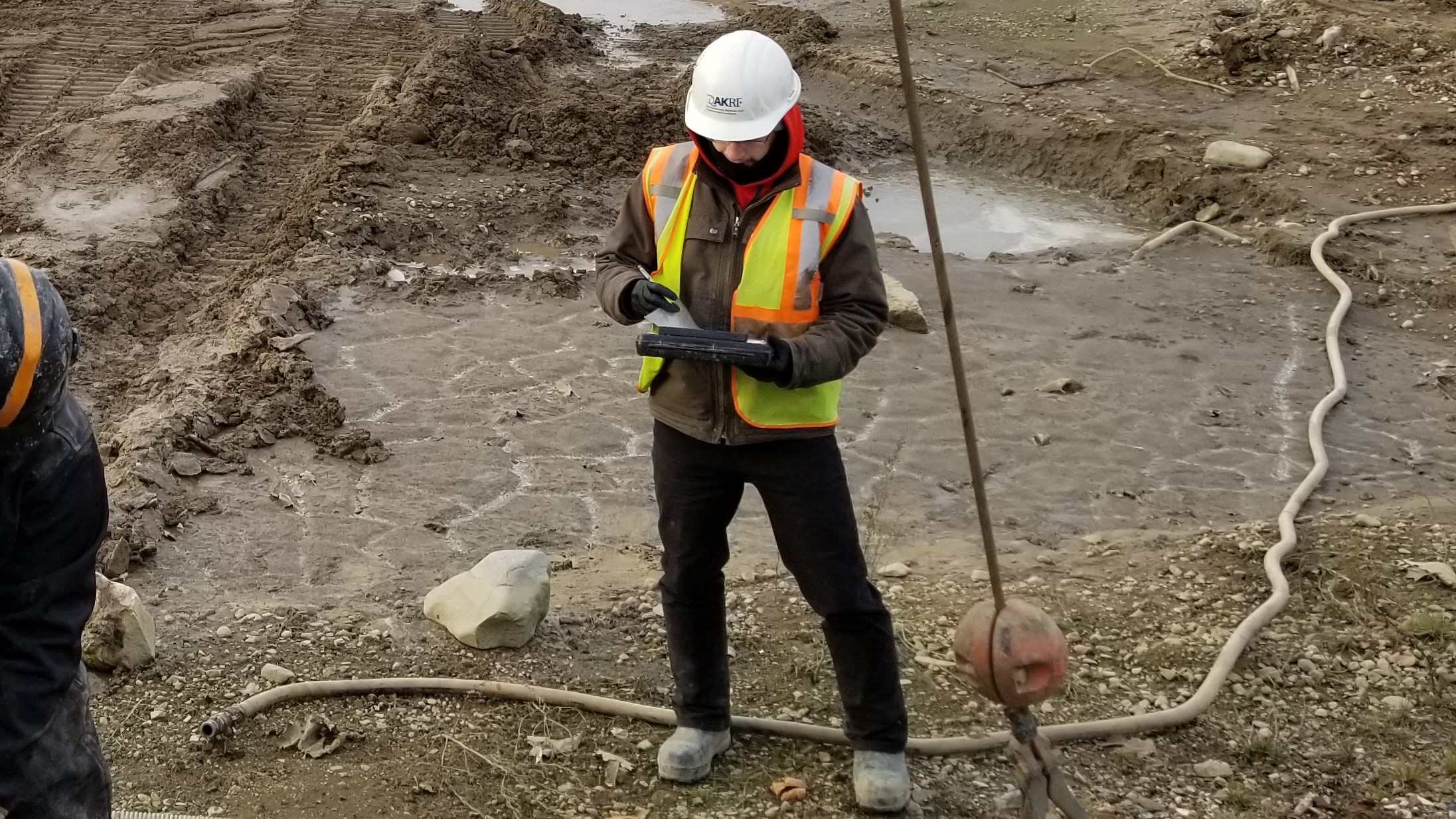Picking the Right Geotechnical Engineers for Your Next Large-Scale Job
Picking the Right Geotechnical Engineers for Your Next Large-Scale Job
Blog Article
The Interdisciplinary Approaches in the Geotechnical Industry: Bridging the Gap Between Design, Geology, and Environmental Scientific Research for Optimum Task End Results
The integration of engineering, geology, and ecological science within the geotechnical sector is not merely helpful; it is vital for achieving optimal job outcomes. This interdisciplinary cooperation cultivates an extensive understanding of facility website problems, permitting innovative solutions to emerge. By examining key functions and successful study, we can discover the dynamic interplay that drives job success. Nonetheless, challenges stay in properly managing these multidisciplinary initiatives, raising questions concerning future trends and prospective developments. What approaches might arise to promote this vital cooperation and improve the efficiency of geotechnical practices?
Value of Interdisciplinary Collaboration
The relevance of interdisciplinary partnership in the geotechnical market can not be overemphasized. Effective geotechnical tasks need the integration of diverse proficiency from different fields, including design, geology, and ecological science. This partnership guarantees that all elements of a project are taken into consideration, leading to detailed solutions that deal with intricate challenges.
Interdisciplinary partnership fosters development by enabling experts to share understandings and techniques that might not be obvious when functioning in isolation (tailings engineer). By leveraging the toughness of numerous techniques, teams can identify potential dangers, maximize layout procedures, and improve the sustainability of geotechnical projects. Additionally, such cooperation advertises a holistic understanding of site-specific conditions, which is crucial for accurate assessment and decision-making.
The intricacy of geotechnical tasks demands a coordinated technique to problem-solving. Inevitably, interdisciplinary collaboration is important for progressing best practices and accomplishing quality in the geotechnical sector.
Trick Functions of Each Discipline
Cooperation amongst different disciplines is not just valuable; it is important for the successful execution of geotechnical jobs. Each discipline-- design, geology, and ecological scientific research-- plays a distinct yet interconnected role that contributes to forecast efficacy and sustainability.
Geotechnical engineers are mostly responsible for developing structures and ensuring structural integrity. They examine dirt and rock residential or commercial properties to assess load-bearing capabilities, supplying important data for risk-free building and construction techniques. Their proficiency allows the solution of innovative solutions to intricate challenges.

Ecological scientists analyze the potential effects of building and construction on ecosystems and water sources. They carry out ecological assessments and develop reduction methods to reduce damaging impacts. By incorporating environmental factors to consider, they ensure compliance with laws and promote sustainability throughout the task lifecycle.
Case Researches of Successful Integration
Successful combination of geotechnical techniques can be exhibited through different study that highlight the efficiency of team effort in attending to intricate engineering challenges. One remarkable instance is the building and construction of the Hong Kong-- Zhuhai-- Macau Bridge, where a collaborative method involving geotechnical design, geology, and environmental science was important. Engineers and geologists functioned in unison to examine the seabed problems and optimize the foundation style, making certain security and reducing environmental effect.
Another impactful situation is the improvement of slope stability in the San Francisco Bay Area, where an interdisciplinary team integrated geotechnical evaluation with ecological analyses. By incorporating geological surveys and hydrological research studies, the group effectively identified potential landslide dangers and carried out efficient mitigation steps, boosting safety and security and sustainability.
Additionally, the redevelopment of Brownfield websites frequently needs a multidisciplinary method. In one visit their website instance in Chicago, cooperation amongst geotechnical engineers, ecological researchers, and urban planners resulted in the successful removal of polluted soil, allowing for the risk-free change of the website into a community park. These study illustrate that interdisciplinary partnership not just addresses technical challenges but likewise promotes innovative options that benefit both areas and jobs.
Obstacles in Multidisciplinary Projects

Moreover, collaborating timetables and operations among different teams can be troublesome, particularly when each self-control has special task milestones and deliverables. This imbalance can cause delays and enhanced costs. The challenge of source allowance likewise impends huge; making sure that specific know-how is readily available at essential times needs cautious planning and insight.
Finally, regulative compliance presents an additional considerable challenge. Each technique might deal with various regulative structures, and lining up these demands to meet task objectives can be taxing and intricate. Resolving these difficulties necessitates solid management and effective interaction methods to cultivate cooperation and ensure that multidisciplinary teams work cohesively towards shared objectives.
Future Trends in Geotechnical Practices
As the geotechnical sector evolves, emerging trends are reshaping methods to attend to the challenges faced in multidisciplinary you can check here jobs - consulting engineer. One considerable fad is the increased combination of innovative modern technologies, such as artificial intelligence and device understanding, into geotechnical evaluation and design. These technologies improve anticipating modeling and danger analysis, enabling engineers to make more informed decisions throughout the task lifecycle

In addition, the fostering of digital twins and real-time monitoring systems is becoming much more common. These devices assist in ongoing assessment of soil problems and structural efficiency, enabling timely interventions when problems occur.
Final Thought
In verdict, the assimilation of engineering, geology, and ecological scientific research is essential for accomplishing optimum results in the geotechnical industry. Interdisciplinary cooperation fosters development, boosts analytic capacities, and aligns technical needs with ecological sustainability. Successful study highlight the advantages of this technique, while recognizing the obstacles encountered in multidisciplinary tasks. Looking in advance, accepting these joint methods will certainly be crucial for navigating future patterns and progressing the field of geotechnical engineering.
The assimilation of engineering, geology, and environmental scientific research within the geotechnical industry is not simply beneficial; it is critical for attaining optimal task look at here now end results. Efficient geotechnical jobs require the integration of varied know-how from various areas, including design, geology, and ecological science.Navigating the complexities of multidisciplinary projects in the geotechnical market presents several considerable obstacles.As the geotechnical sector advances, emerging fads are reshaping practices to attend to the difficulties encountered in multidisciplinary tasks. Geotechnical engineers are increasingly working together with environmental scientists to guarantee that jobs align with sustainability goals and abide with regulatory demands.
Report this page